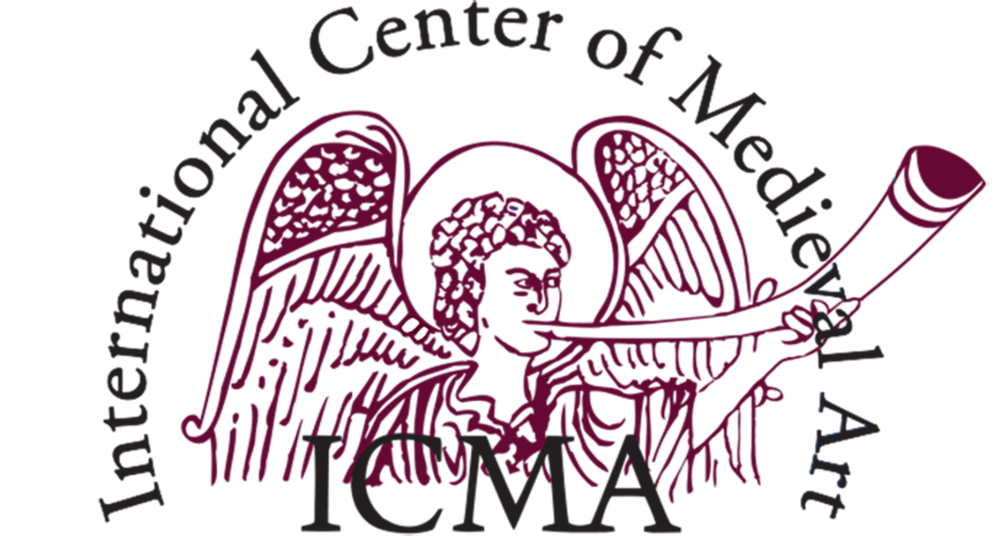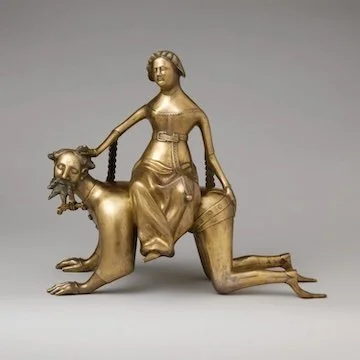New Exhibition
New Exhibition
Spectrum of Desire: Medieval Art, Eroticism, and the Museum
Melanie Holcomb, Co-Curator
Nancy Thebaut, Co-Curator
The Met Cloisters, New York, NY
October 17, 2025–March 29, 2026
Thursday, November 6, 2025, 6pm
Aquamanile in the Form of Phyllis and Aristotle, Netherlandish, late 14th or early 15th century. Copper alloy, 12 ¾ x 7 x 15½ in. (32.5 x 17.9 x 39.3 cm). The Metropolitan Museum of Art, New York, Robert Lehman Collection, 1975 (1975.1.1416)
On October 16, 2025, a landmark exhibition called Spectrum of Desire: Love, Sex, and Gender in the Middle Ages will open at The Met Cloisters. Visitors to this institution, or to the medieval galleries of museums in general, tend to associate the Middle Ages with images that uphold traditional beliefs and hierarchies – paintings and sculptures celebrating Christ and the Virgin, tapestries and other precious objects exalting royal authority, for instance. The Spectrum of Desire will upend such expectations. The exhibition will explore how medieval objects reveal and structure the performance of gender, understandings of the body, and erotic encounters, both physical and spiritual. Featuring approximately fifty objects, most of which are from the museum’s permanent collection, it will offer new readings of otherwise familiar objects in which gender, sexuality, relationships, and bodies are central themes. Although firmly grounded in the Middle Ages, the exhibition will also encourage modern audiences to reflect on the ways that gender, sex, and desire structure their own lives and identities today. In this talk, Curator Melanie Holcomb will speak on the goals of the exhibition and discuss specific works in the show, demonstrating how asking new questions about the past can reveal sometimes surprising answers about the present.
For more information about the exhibition, visit https://www.metmuseum.org/exhibitions/spectrum-of-desire-love-sex-and-gender-in-the-middle-ages

